Tradition in transformation
5 Nov 2018
By Theodore Lim
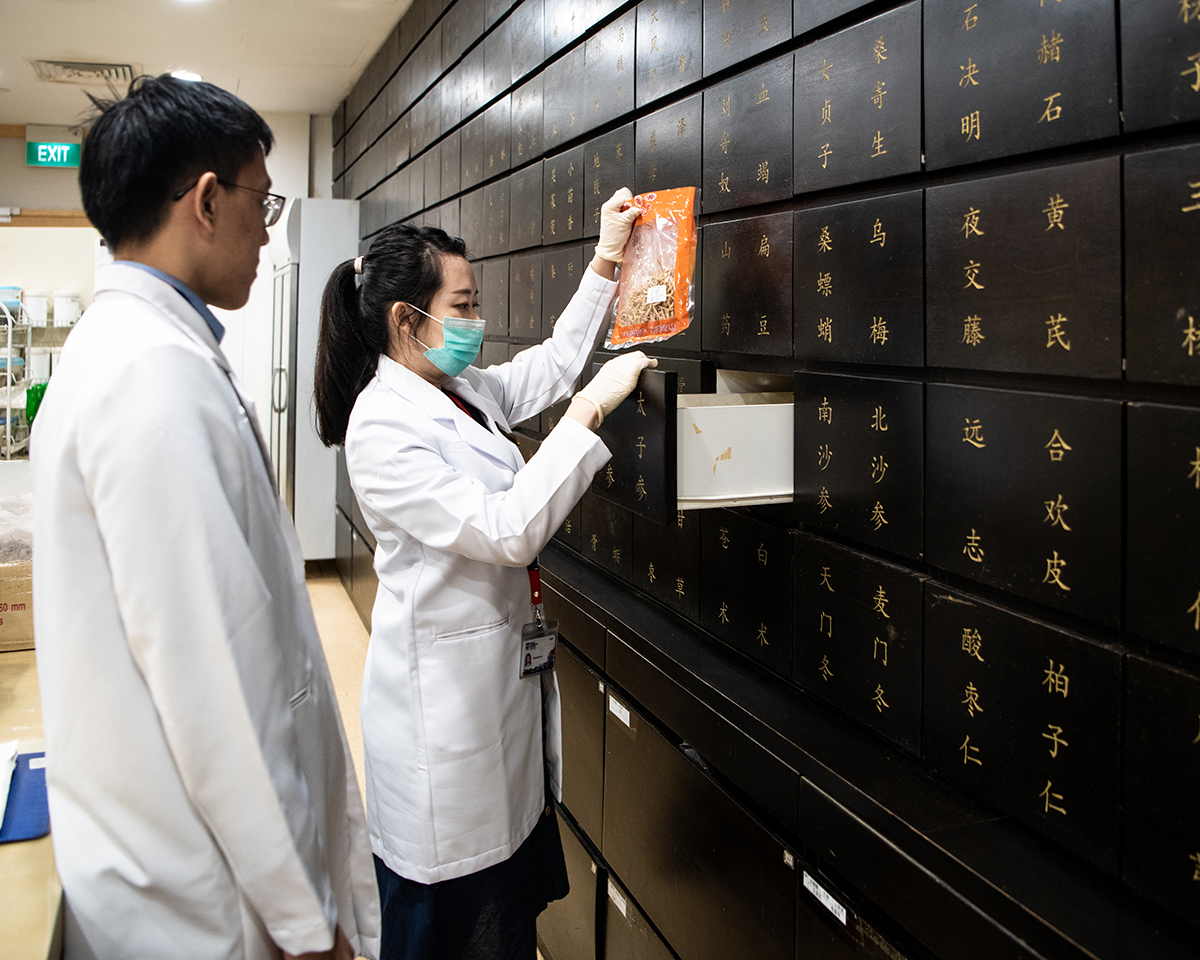 Mr Frederick Koh, 28, and Ms Cheok Kah Jie, 26, searching for herbs in the dispensary to fill a prescription. They are in their first year of practice as physicians.
Mr Frederick Koh, 28, and Ms Cheok Kah Jie, 26, searching for herbs in the dispensary to fill a prescription. They are in their first year of practice as physicians.
PHOTO: THEODORE LIM
The NTU Chinese Medicine Clinic treats ailments ranging from sores throats to colds. Photo Editor
Theodore Lim visits the clinic to debunk Chinese medicine myths and learn more about its treatments.
Mention traditional Chinese medicine
(TCM) and what comes to mind are often
images of musty medical halls frequented
by the older generation of Chinese and walls
stacked high with medicinal herbs.
However, NTU’s TCM clinic in the School
of Biological Sciences is well-lit, air-conditioned and colourful.
A bitter scent of Chinese herbs permeates
the clinic.
The treatment area, together with a
teaching laboratory and a Chinese medicine
museum, make up the NTU Chinese Medicine Clinic.
Open to the public, the clinic provides
consultations and treatments in fields ranging from internal medicine to paediatrics.
Located on the first floor of SBS, the
clinic sees about 30 NTU students every day.
“I chose to visit the clinic for pain relief
that isn’t in the form of painkillers. The
clinic itself is actually really convenient for students who live on campus because of its
location in school,” said third-year Wee Kim
Wee School of Communication and Information student Justin Yeo, 23.
Yeo sought treatment for his foot injury
last month.
TCM relies more on natural, herbal
remedies to combat ailments, compared to
pharmaceutical medicine in Western clinics.
It also uses methods like acupuncture,
tuina (push and grasp in Mandarin) and
cupping therapy.
Not too different
Ms Cheok Kah Jie, a physician at the NTU
Chinese Medicine Clinic, said that TCM
consultations are very similar to those in a
Western medicine clinic.
“A lot of people think that all we do is
the stereotypical pulse-searching routine,
and that we make a diagnosis directly from
there, but it’s much more than that. TCM practitioners are taught to use all our five
senses, such as smell, touch and hearing to
understand our patients better,” added the
26-year-old.
Ms Cheok graduated from SBS with a
double degree in Biomedical Sciences and
Traditional Chinese Medicine last year.
Under the five-year programme, students
are taught the properties of Chinese herbs
and TCM theories.
They spend their final two years in Beijing
to further their studies in Chinese medicine
at an established hospital.
Following modern practicesTCM has now begun to include various
hygiene practices that are common in
Western medicine.
For example, they use a new pair of disposable gloves for every patient, as well as
sterilised needles for acupuncture.
Consultation rooms have blood pressure machines, alcohol wipes, and sterile bins
for used needles.
The NTU Chinese Medicine Clinic also
uses diagnostic methods in Western medicine, such as x-rays and cardiac radiology, to complement its traditional Chinese
methods of healing.
The TCM trade is set to gain more
legitimacy in the future, due to research
developments in the industry.
Current TCM research is centred on
understanding the active components
in herbs that give them qualities like
anti-bacterial and anti-inflammation
properties, said Mr Frederick Koh, 28, Ms
Cheok’s colleague and another registered
physician at the clinic.
“This will really help to change people’s
perceptions of our field of practice, and I
hope that science and TCM can continue
to come together and complement Western medicine.”
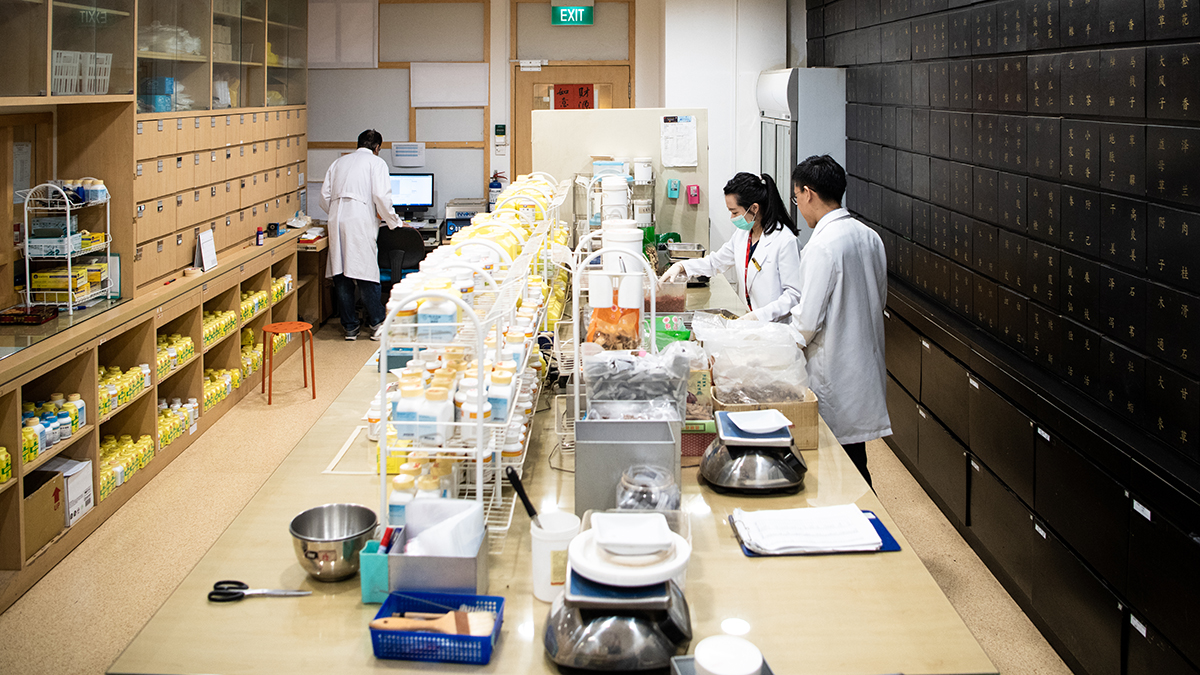 At the back of the clinic’s dispensary sits a well-stocked wooden medicine cabinet, which is
designed like traditional ones seen in older medicine halls.
At the back of the clinic’s dispensary sits a well-stocked wooden medicine cabinet, which is
designed like traditional ones seen in older medicine halls.
PHOTO: THEODORE LIM
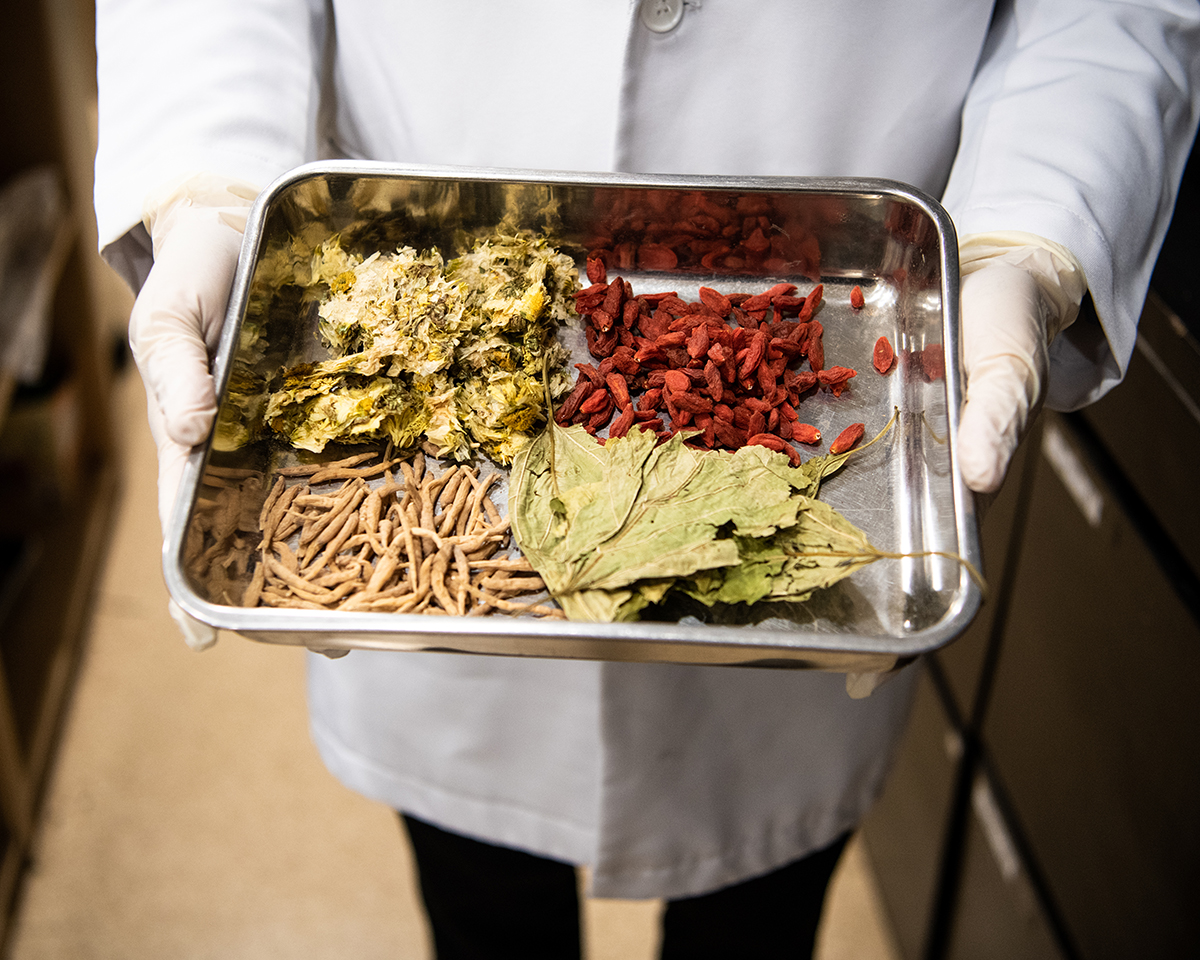 A mixture of goji (wolfberries), ju hua (chrysanthemum flowers), dong chong xia cao (cordyceps), and sang ye (mulberry leaves). A remedy using these herbs is said to cure fatigue, and is commonly dispensed to students.
A mixture of goji (wolfberries), ju hua (chrysanthemum flowers), dong chong xia cao (cordyceps), and sang ye (mulberry leaves). A remedy using these herbs is said to cure fatigue, and is commonly dispensed to students.
PHOTO: THEODORE LIM
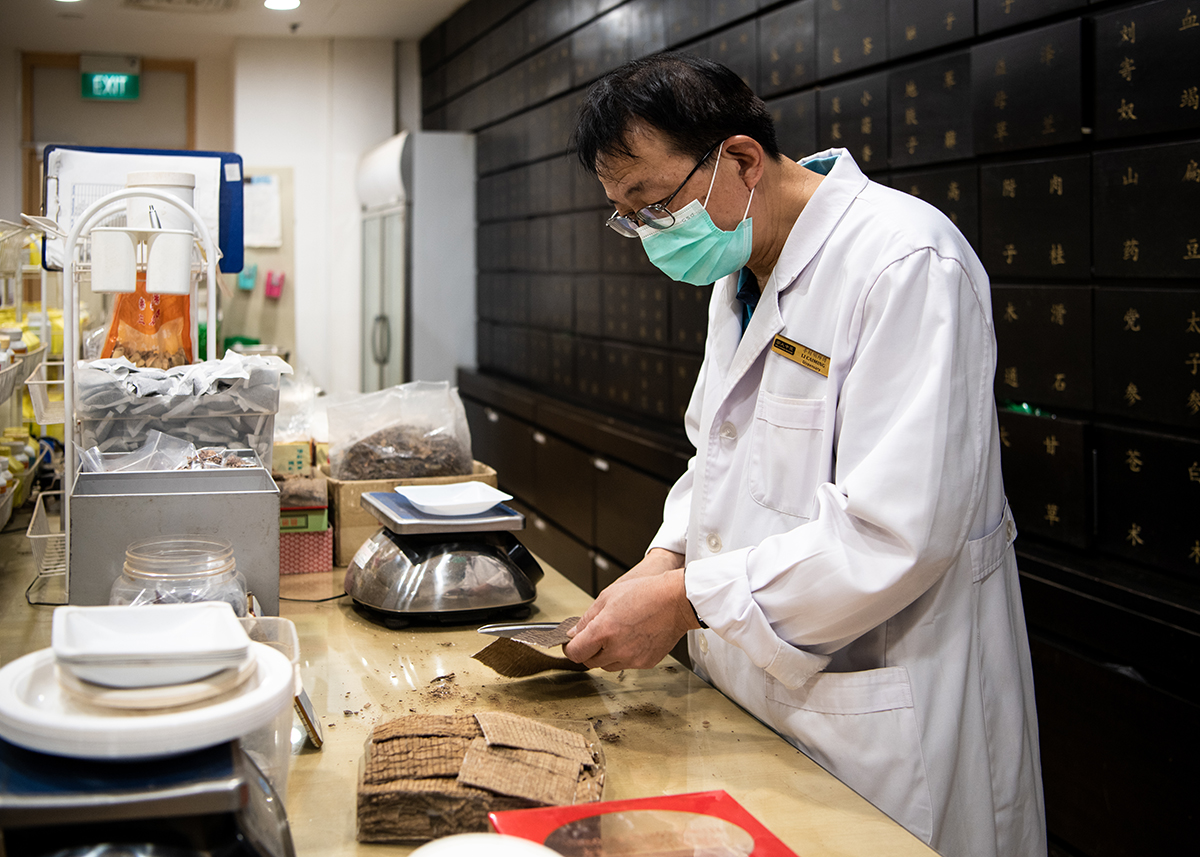 Dispensary staff member Mr Li Caiming, cuts up du zhong (eucommia bark) into smaller
pieces to be used in herbal remedies. Du zhong helps to lower blood pressure.
Dispensary staff member Mr Li Caiming, cuts up du zhong (eucommia bark) into smaller
pieces to be used in herbal remedies. Du zhong helps to lower blood pressure.
PHOTO: THEODORE LIM
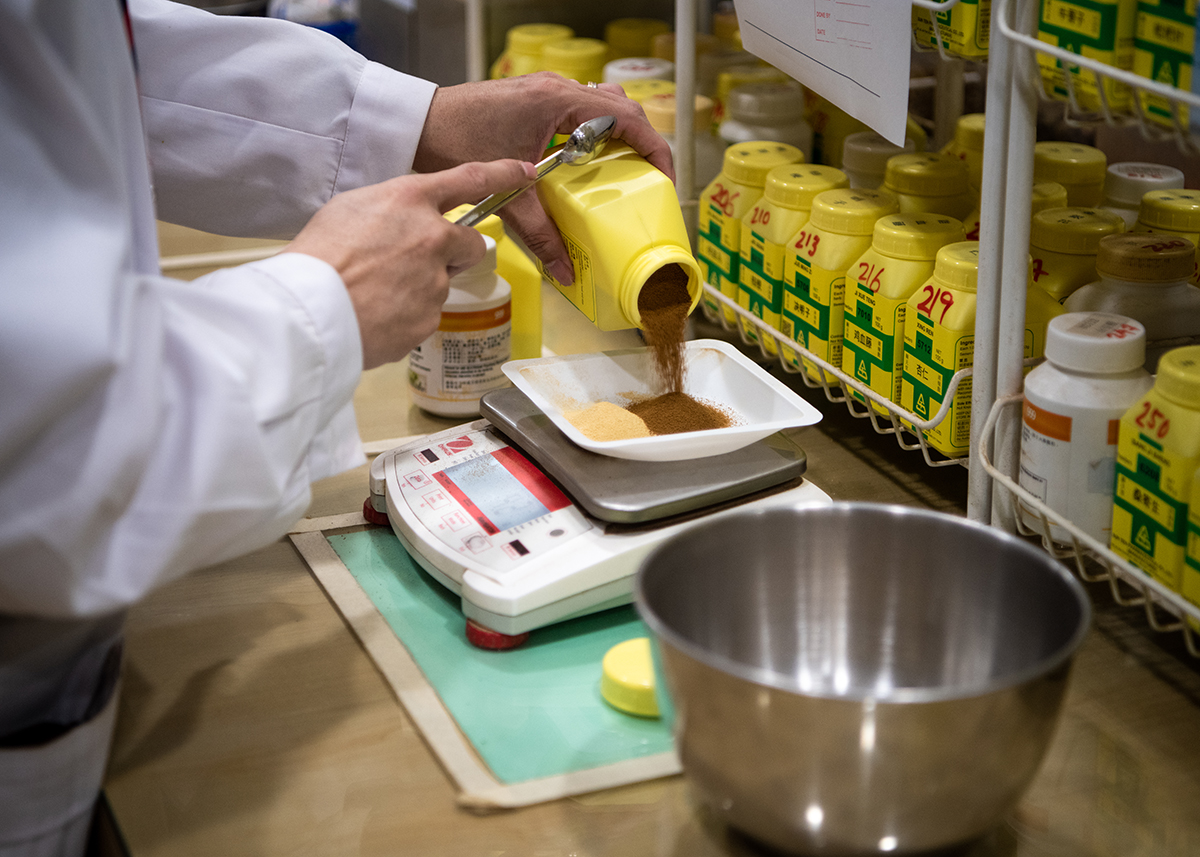 The use of powdered herbs has become more common in TCM, for easier consumption.
The use of powdered herbs has become more common in TCM, for easier consumption.
PHOTO: THEODORE LIM
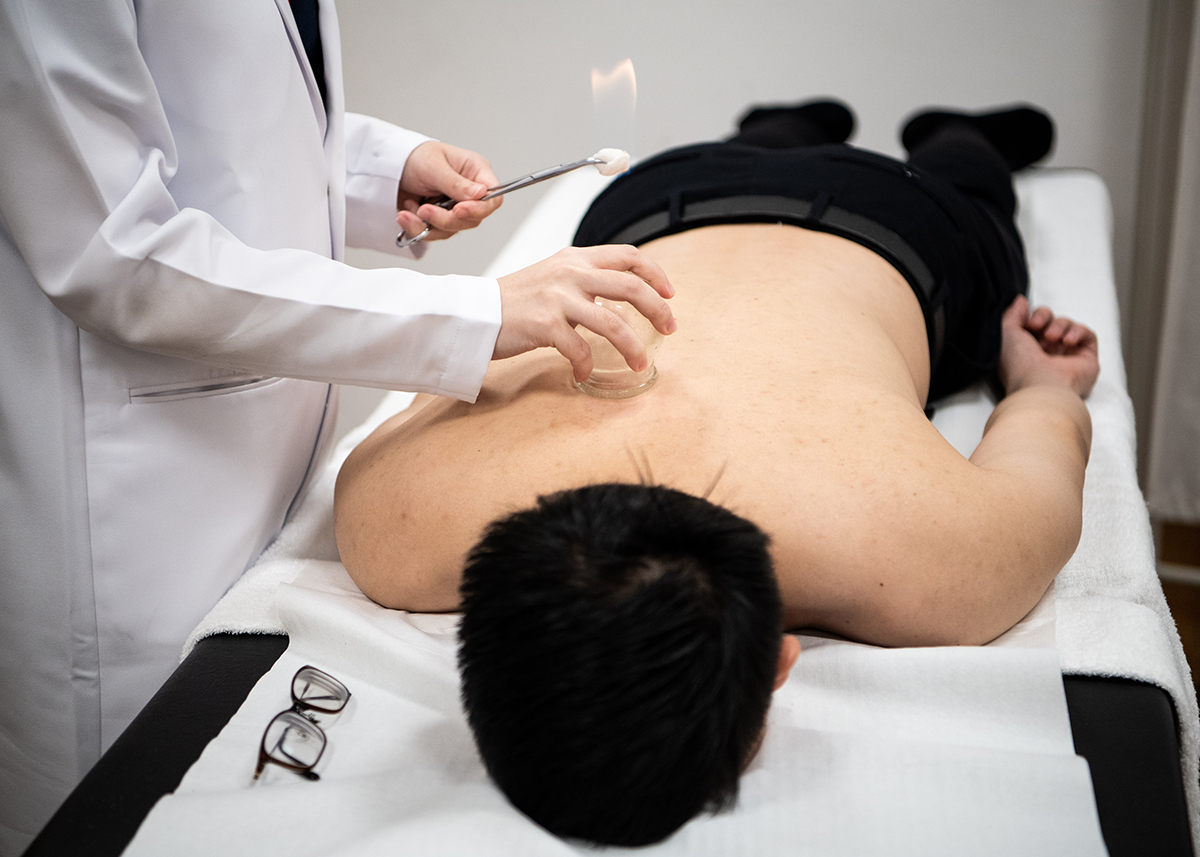 Ms Cheok performs cupping therapy on a patient’s back. The placement of these glass
cups at strategic locations on a patient’s back helps to relieve pain, reduce inflammation and
improve blood flow.
Ms Cheok performs cupping therapy on a patient’s back. The placement of these glass
cups at strategic locations on a patient’s back helps to relieve pain, reduce inflammation and
improve blood flow.
PHOTO: THEODORE LIM
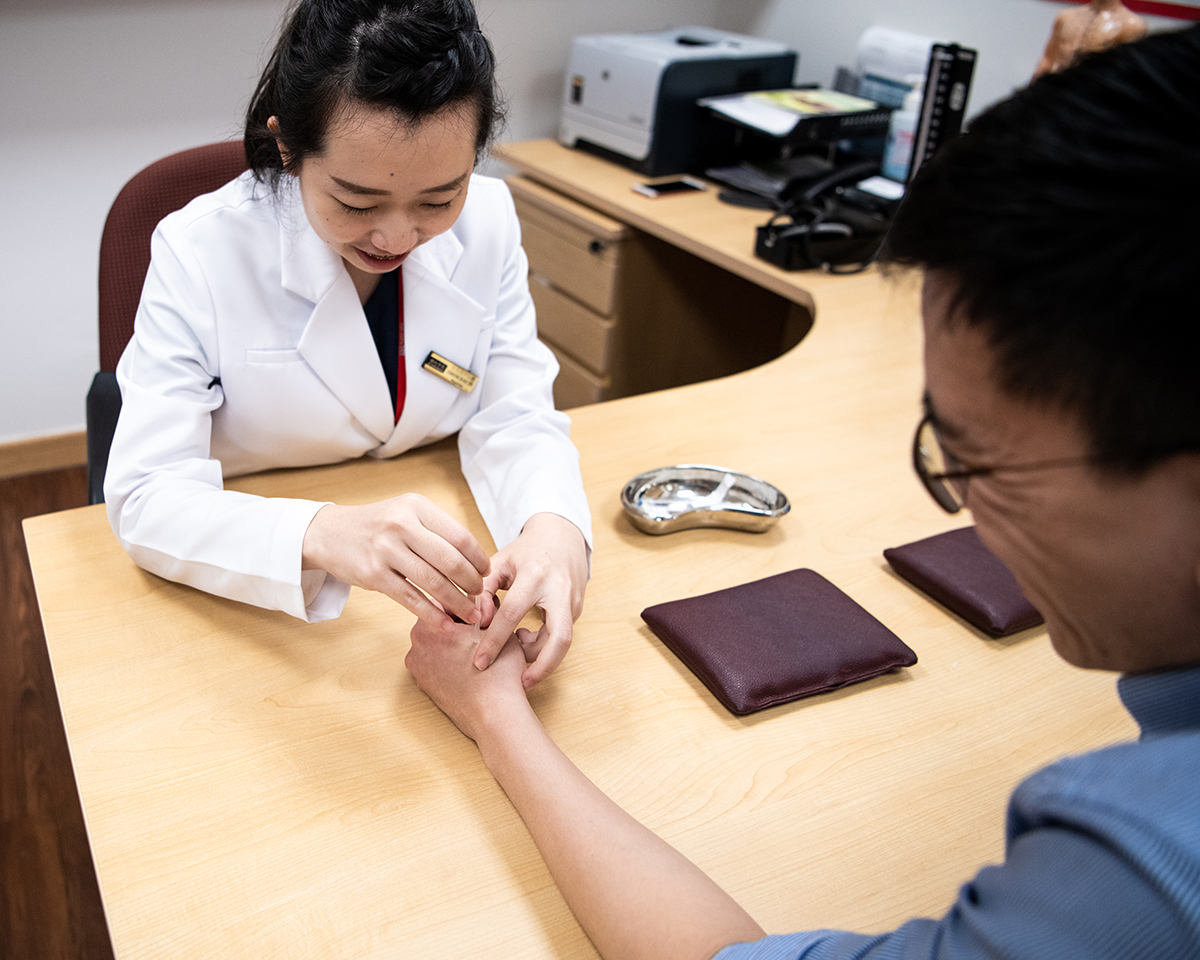 Ms Cheok administers acupuncture on a patient’s wrist to relieve soreness. The use of
sterilised, one-time use needles in clean packaging has become the norm among Chinese
medicine practitioners.
Ms Cheok administers acupuncture on a patient’s wrist to relieve soreness. The use of
sterilised, one-time use needles in clean packaging has become the norm among Chinese
medicine practitioners.
PHOTO: THEODORE LIM








